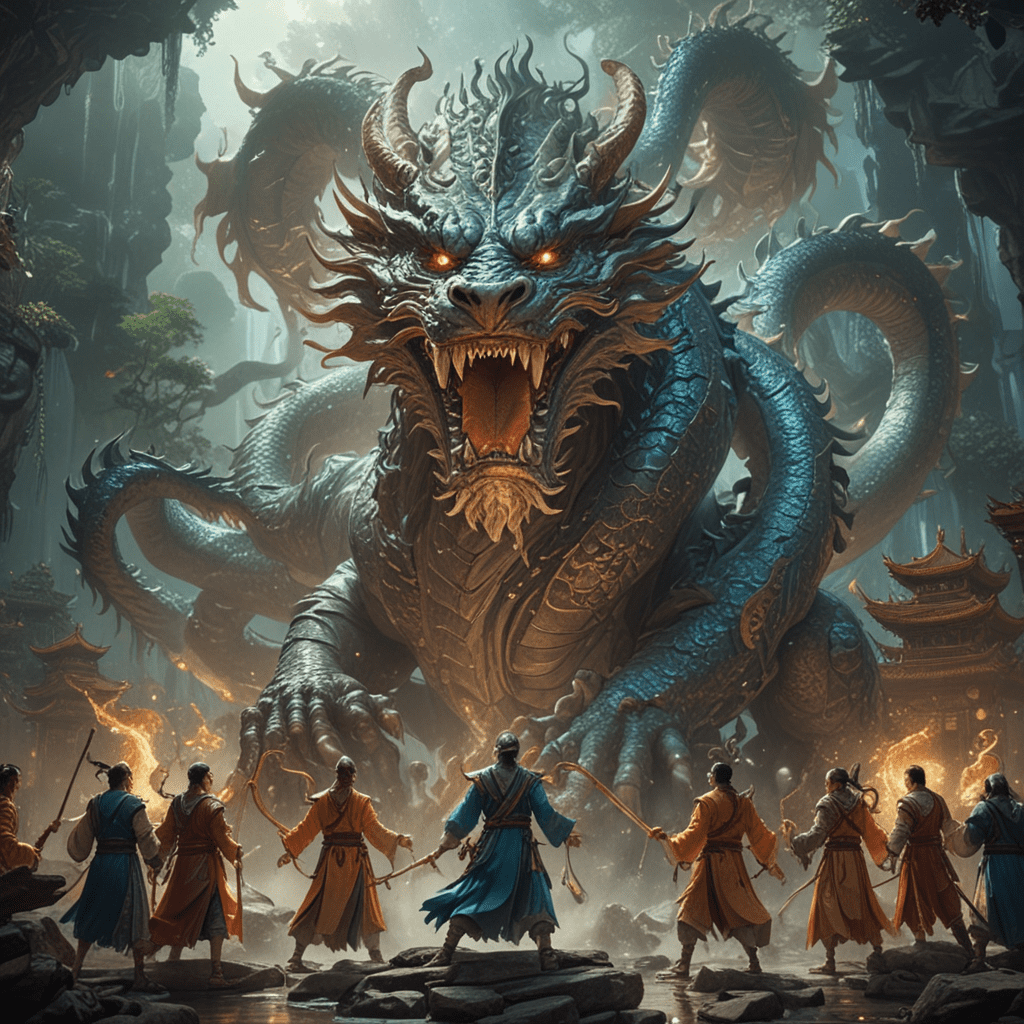The Legend of the Nine Sons of the Dragon in Chinese Mythology
I. Introduction
The captivating legend of the Nine Sons of the Dragon has been deeply entwined with Chinese mythology for centuries. These mythical creatures, each possessing unique characteristics and abilities, are said to be the offspring of the revered Dragon King. Their tales have enriched Chinese folklore, literature, and art, shaping the cultural fabric of the nation.
II. Origin
According to ancient Chinese mythology, the Dragon King, also known as Ao Guang, was the sovereign of the Four Seas. It was said that when the King ascended to the heavens, he transformed into a majestic five-clawed dragon. During his absence, his nine sons were left in charge of the seas. Each son displayed distinct traits and abilities, reflecting the diverse aspects of the dragon's power and influence.
III. Bian (The Coiling Python)
Bian, the first of the Nine Sons, is depicted as a colossal serpent with a long, sinuous body covered in intricate scales. It is believed that Bian possesses the power to control water and is often associated with rivers and lakes. Its serpentine form symbolizes the boundless fluidity and transformative nature of water.
IV. Chiwen (The Ridge-Watcher)
Chiwen, the second son, is a fearsome creature with a dragon's head and a fish's tail. It is said to be a guardian of homes and palaces, perched atop roofs to ward off evil spirits. Chiwen's keen eyesight allows it to spot potential threats, making it a symbol of vigilance and protection.
V. Chaofeng (The Phoenix-Swallow)
Chaofeng, the third son, is a hybrid creature with the head of a phoenix and the body of a swallow. It is believed to represent harmony and balance, as the phoenix symbolizes prosperity while the swallow brings good fortune. Chaofeng is often depicted in art as a harbinger of auspicious events.
VI. Pulao (The Bell-Hanger)
Pulao, the sixth son, is depicted as a powerful dragon with a human-like face and a bell-shaped head. It is said to have the ability to create thunderous roars and is often associated with music and bells. Pulao's presence is believed to bring good luck and ward off evil, making it a popular motif in ancient Chinese architecture.
VII. Yazi (The Book-Seizer)
Yazi, the seventh son, is a fearsome creature with the head of a dragon and the body of a lion. It is believed to be the guardian of books and knowledge, with a voracious appetite for wisdom. Yazi is often depicted as holding a book or scroll in its mouth, symbolizing its thirst for knowledge and its protective nature over literary treasures.
VIII. Suanni (The Winged Lion)
Suanni, the eighth son, is a majestic creature with the head of a lion and the body of a dragon. It is said to have the ability to fly and is often associated with speed and agility. Suanni is believed to be a guardian of temples and palaces, protecting them from harm with its powerful presence.
IX. Bixi (The Turtle-Dragon)
Bixi, the ninth and youngest son, is depicted as a giant turtle with the head of a dragon. It is said to carry the world on its back, symbolizing stability and strength. Bixi is often used as a foundation for heavy objects, such as monuments and steles, to ensure their stability and longevity.
X. Gongfu (The Dragon-Fish)
Gongfu, the final son, is a mystical creature with the head of a dragon and the body of a fish. It is said to be the ruler of the aquatic realm, controlling the tides and weather. Gongfu is believed to bring good fortune and prosperity to those who encounter it, and is often associated with abundance and wealth.
FAQ
Q: What is the significance of the Nine Sons of the Dragon in Chinese culture?
A: The Nine Sons of the Dragon are revered as symbols of power, protection, and good fortune in Chinese mythology. They are believed to possess unique abilities and characteristics, representing various aspects of the dragon's influence and embodying the harmony and balance of the natural world.
Q: How are the Nine Sons of the Dragon depicted in art and architecture?
A: The Nine Sons of the Dragon have been a popular motif in Chinese art and architecture for centuries. They are often depicted in sculptures, paintings, and decorative elements, symbolizing strength, protection, and auspiciousness. Their distinct features and abilities have made them enduring symbols of Chinese mythology and culture.





